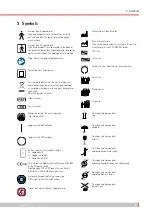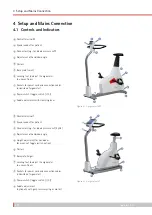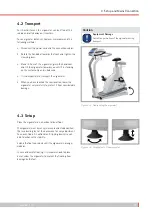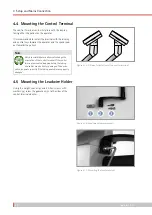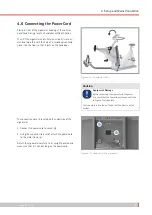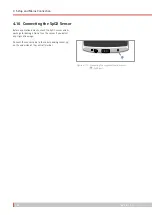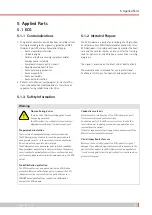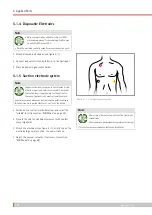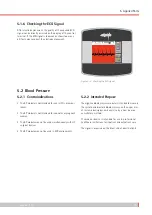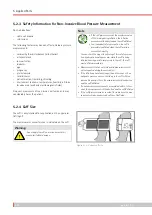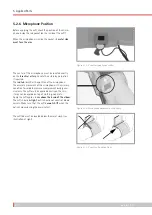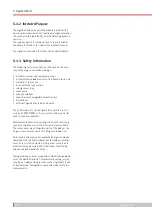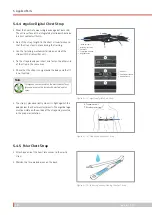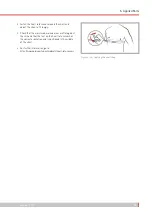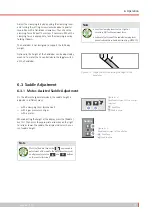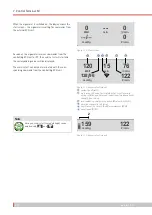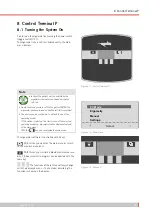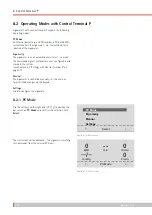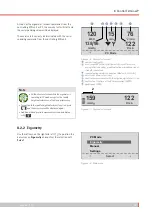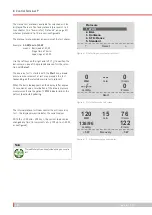
5 Applied Parts
ergoselect 4 / 5
23
5.2.7 Checking the Cuff Tubing
Check that the cuff tubing does not knock against the
patient's knee, when the patient is pedaling and the hand
is on the handlebar.
Secure the cuff tubing with the Velcro tape attached to the
handlebar.
Instruct your patient to move as little as possible during
a blood pressure measurement and, in particular, to avoid
excessive contractions of the muscles in the upper arm.
Warning
Patient Hazard
• Make sure that the cuff tubing will not be kinked
during the exercise test. A kink in the tube may
impair perfusion, which may seriously harm
the patient.
• If, by accident, an excessive pressure builds up inside the cuff,
either remove the cuff immediately from the arm or discon
nect the cuff tubing from the control terminal.
The same measures are recommended if the cuff does not
deflate correctly.
Figure 5 – 8: Distance between knee and tubing
5.3 SpO2
5.3.1 Contraindications
Due to the non-invasive nature of pulse oximetry, there
are no contraindications to using this measurement. Under
certain circumstances, however, pulse oximetry readings
are of limited value. For example, if the pulsatile blood flow
is missing, the method will not work, which is the case in
the following situations:
• arrhythmias (cardiac rhythm disturbances)
• hypothermia (low body temperature)
• hypovolemia (reduced blood volume)
• hypotension (low blood pressure)
• vasoconstriction in shock
Summary of Contents for ergoselect 4
Page 1: ...ergoselect 4 5 Ergometer Operator s Manual 201000433000 Version 2021 06 01 Rev 04 English...
Page 2: ......
Page 95: ......

